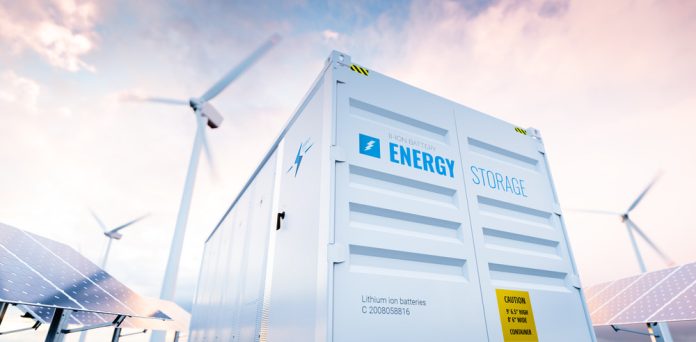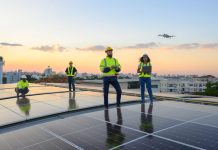On August 8th, 2023, the city of St. Louis, Missouri marked a pivotal moment in the U.S.’s commitment to a cleaner future. A $400 million battery materials plant, bolstered by a $197 million federal grant to a leading global specialty minerals company, ICL Group, broke ground. Set to become the first substantial lithium iron phosphate (LFP) facility in the nation, it aims to produce a staggering 30,000 metric tons of LFP material by 2025. This venture speaks volumes about the nation’s dedication to bolstering the energy storage, electric vehicle (EV), and broader clean energy sectors, fostering both economic growth and sustainability at home.
Given the palpable impacts of climate change and dwindling fossil fuel reserves, our transition to renewable energy isn’t just a desirable course of action; it’s an unequivocal imperative.
Energy Storage: Paving the Way for a Greener Future
Prominent renewable sources like solar and wind are celebrated for their eco-friendly attributes, from their non-polluting nature to their minimal water needs. Yet, their unpredictable generation cycles underscore the pivotal role of energy storage. In the quest to harness the true potential of renewables, energy storage emerges as the cornerstone, assuring grid resilience and a reduced dependence on fossil fuels.
Harnessing nature’s bounty, from the sun’s radiance and the wind’s might to the power of tidal waves and the Earth’s geothermal treasures, has become central to our global energy narrative.
Renewable Energy’s Benefits and Challenges
While renewable technologies are trailblazers, offering eco-friendly benefits and strengthening local energy systems, they aren’t without hurdles. One of the most pressing? Efficient energy storage. Innovators like ICL Group, Tesla, and Siemens are undeterred, making strides to overcome this.
Energy storage is far from one-dimensional. At its essence, it’s about preserving generated energy for later use, employing a gamut of technologies. From familiar lithium-ion batteries and pumped hydroelectric storage to specialized solutions like compressed air or thermal storage, these methods act as an energy reservoir. They enhance our grid’s capacity, bridging supply-demand disparities and optimizing the use of fickle renewable sources.
For renewables, inconsistent generation remains a challenge. Solutions are emerging, but concerns about efficiency, durability, and environmental impacts underscore the need for innovation.
ICL Group’s Vision for the Future of Energy Storage
ICL Group is charting a new course in battery technology, prioritizing advanced energy storage. Their work extends beyond conventional lithium-ion batteries, which, while suitable for smaller applications like EVs, often falter when scaled up for larger systems. A focus on recyclable and reusable electrolyte blends for bromine-based flow batteries exemplifies their innovation. By adjusting the size of the electrolyte tank, these batteries promise scalability, making them perfect candidates for grid stabilization.
Additionally, ICL’s LFP solutions, derived from abundant resources, present a cost-effective and environmentally conscious approach to energy storage. These batteries stand out, not just for their safety and affordability, but for their potential to revolutionize renewable energy’s reliability.
LFP Batteries: A Snapshot
- Mechanism: Operating within the lithium-ion spectrum, LFP batteries use lithium iron phosphate in the cathode, paired with a graphite anode. Electricity is produced through the movement of lithium ions during charge and discharge.
- Scalability: Their energy storage potential hinges on the physical dimensions and quantity of electrode materials. Although scalable, scaling typically entails adding more cells or units.
- Applications: With their versatility, they find uses across EVs, renewable energy storage, and even consumer electronics.
- Safety: As one of the safest lithium-ion compositions, LFP batteries have a minimal risk of thermal runaway, setting them apart from other lithium-ion variants.
- Performance: Their deep discharge capability ensures they maintain efficacy even under frequent discharging.
The Wider Landscape of Energy Storage Innovations
Beyond ICL, giants like Tesla and Siemens are redefining the energy storage paradigm. Tesla’s Powerwall, Powerpack, and Megapack are reshaping how we perceive storage. Siemens, with its Future Energy Solution (FES), is converting excess wind energy into both heat and electricity. Highview Power also emerges with its ‘liquid air’ storage innovation, showcasing the sector’s diversity.
Crafting a Holistic Solution for our Planet
Our pursuit of renewable energy is rooted in a vision of an eco-conscious future and a balanced global ecosystem. Transitioning to renewable sources is our tangible response to the profound challenges climate change thrusts upon us. Pioneers like ICL Group, Tesla, Siemens, and Highview Power are leading this monumental shift, unveiling innovations that will shape the energy narrative for generations to come. Our collective journey towards this future demands unwavering commitment, not only in advocating for renewables as an alternative but in championing them as the new norm.





































